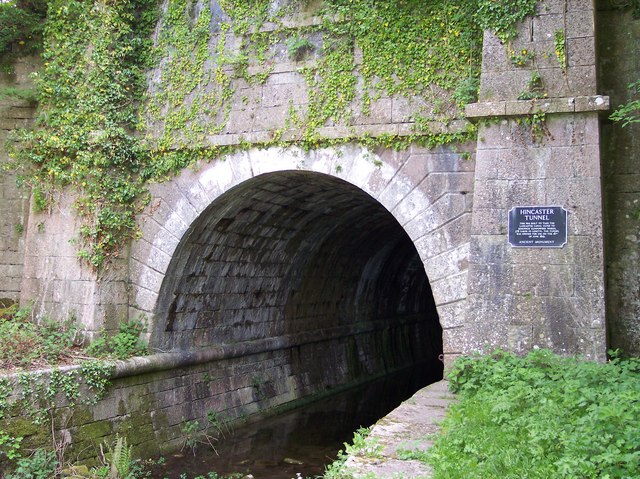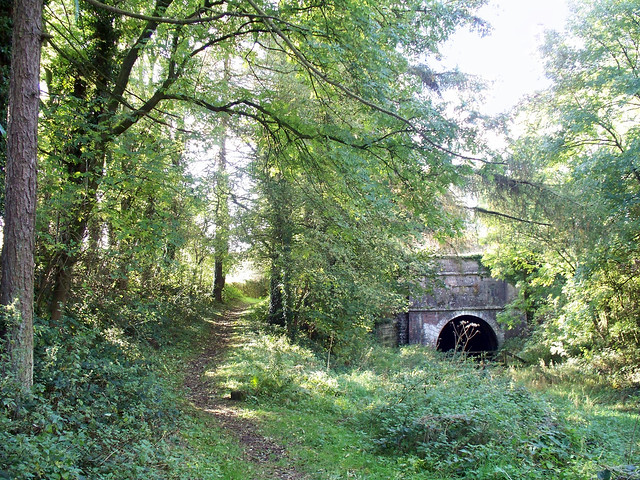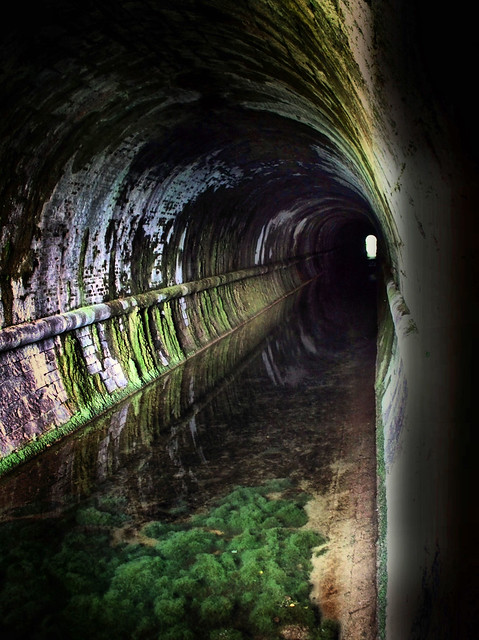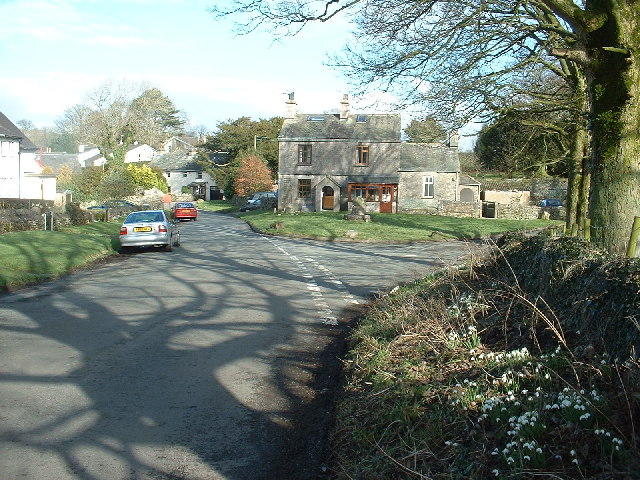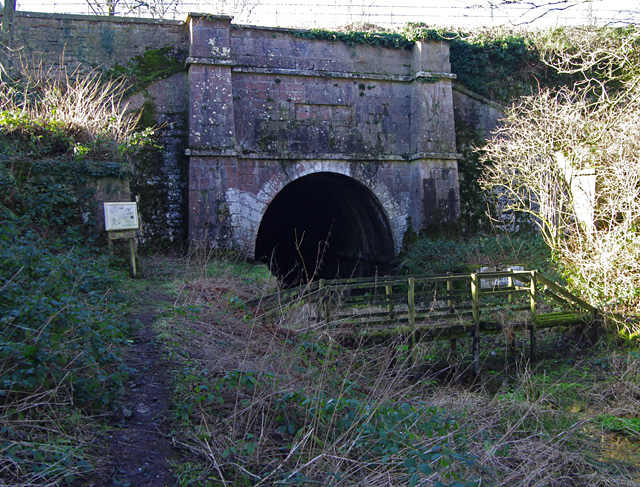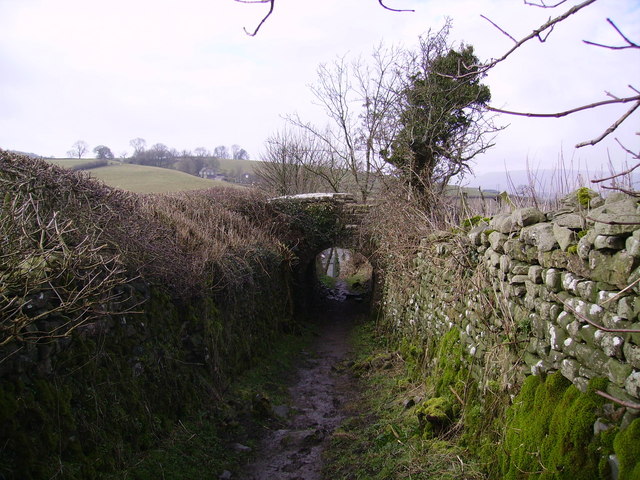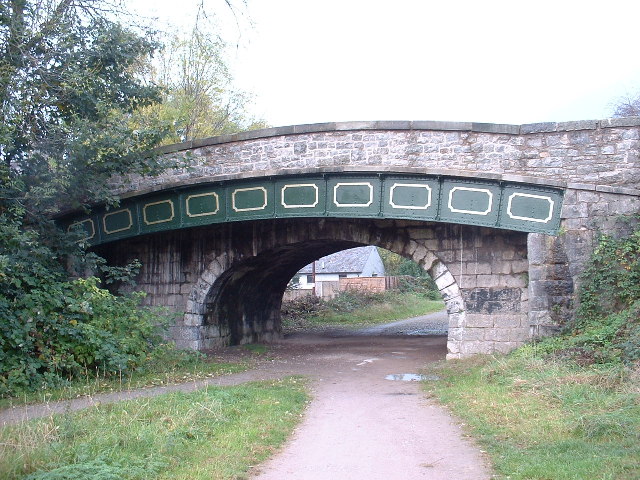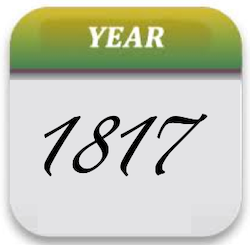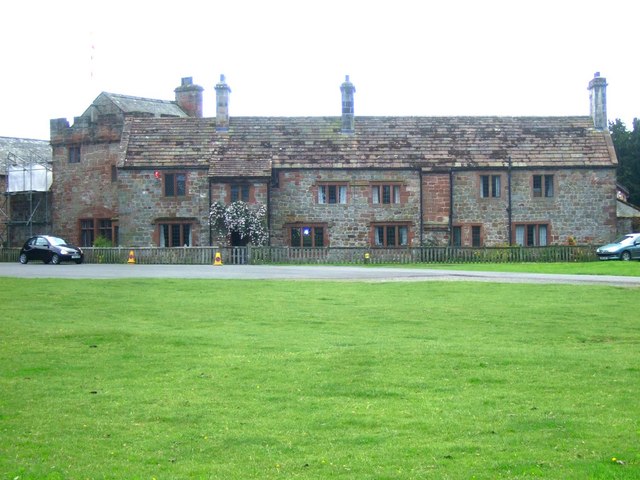Topics > Cumbria > Hincaster > Hincaster Tunnel
Hincaster Tunnel
Hincaster Tunnel was constructed from 1813 to 1817 to allow the Lancaster Canal to pass under Tunnel Hill, to the north of Hicaster, on a route designed to take the canal close to Sedgwick Gunpowder Works. The 346 metres long tunnel is lined with an estimated 4 million bricks, which were made locally, from clay dug at Mosside Farm. The tunnel's ends - the east portal and west portal are dressed with limestone. The tunnel had no towpath, so a separate horse path was built for horses to be led over the hill to the other side. The tunnel was completed on Christmas Day in 1817 and the Tewitfield to Kendal secion of the canal, including Hincaster Tunnel, opened in 1819.
